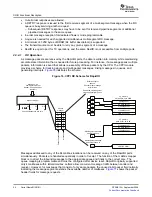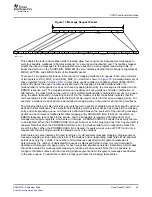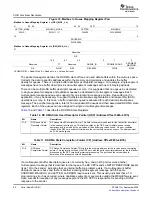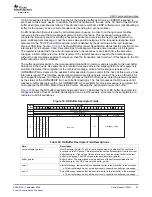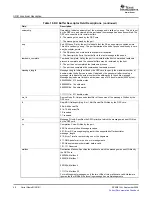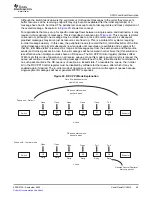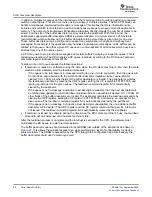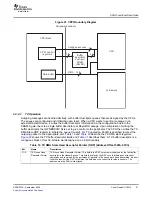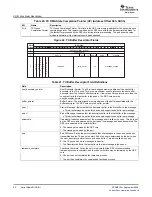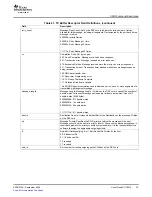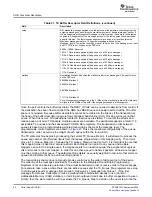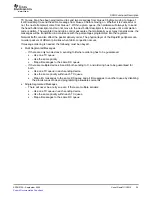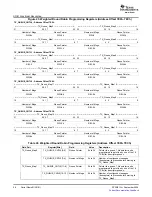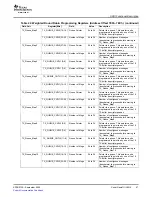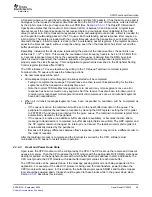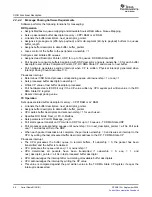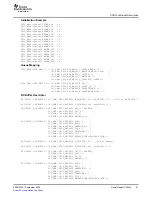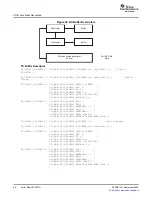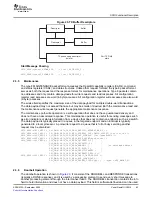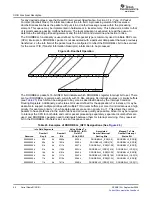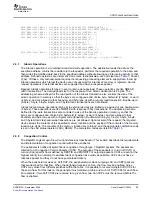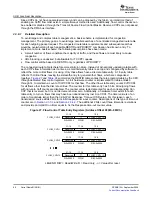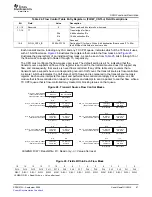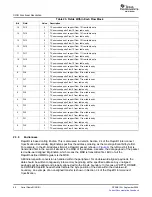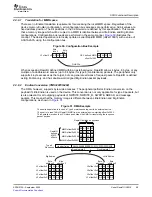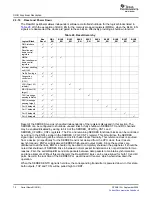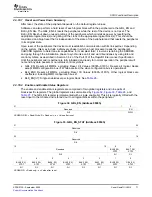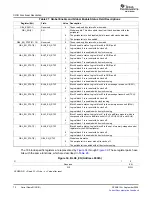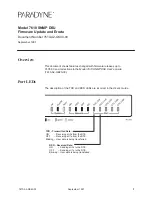
www.ti.com
SRIO Functional Description
Table 22. Weighted Round Robin Programming Registers (Address Offset 7E0h–7ECh) (continued)
Field Pair
Register[Bits]
Field
Value
Description
TX_Queue_Map11
TX_QUEUE_CNTL2[27–24]
Queue Pointer
0h to Fh
Pointer to a queue. This pointer can be
programmed to point to any one of the 16
TX buffer descriptor queues.
TX_QUEUE_CNTL2[31–28]
Number of Msgs
0h to Fh
Number of contiguous messages
(descriptors) to process before moving to
TX_Queue_Map12.
TX_Queue_Map12
TX_QUEUE_CNTL3[3–0]
Queue Pointer
0h to Fh
Pointer to a queue. This pointer can be
programmed to point to any one of the 16
TX buffer descriptor queues.
TX_QUEUE_CNTL3[7–4]
Number of Msgs
0h to Fh
Number of contiguous messages
(descriptors) to process before moving to
TX_Queue_Map13.
TX_Queue_Map13
TX_QUEUE_CNTL3[11–8]
Queue Pointer
0h to Fh
Pointer to a queue. This pointer can be
programmed to point to any one of the 16
TX buffer descriptor queues.
TX_QUEUE_CNTL3[15–12]
Number of Msgs
0h to Fh
Number of contiguous messages
(descriptors) to process before moving to
TX_Queue_Map14.
TX_Queue_Map14
TX_QUEUE_CNTL3[19–16]
Queue Pointer
0h to Fh
Pointer to a queue. This pointer can be
programmed to point to any one of the 16
TX buffer descriptor queues.
TX_QUEUE_CNTL3[23–20]
Number of Msgs
0h to Fh
Number of contiguous messages
(descriptors) to process before moving to
TX_Queue_Map15.
TX_Queue_Map15
TX_QUEUE_CNTL3[27–24]
Queue Pointer
0h to Fh
Pointer to a queue. This pointer can be
programmed to point to any one of the 16
TX buffer descriptor queues.
TX_QUEUE_CNTL3[31–28]
Number of Msgs
0h to Fh
Number of contiguous messages
(descriptors) to process before moving to
TX_Queue_Map0.
The TX queues are treated differently than the RX queues. A TX queue can mix single and multi-segment
message buffer descriptors. The software manages the queue usage.
All outgoing message segments have responses that indicate the status of the transaction. Responses
may indicate DONE, ERROR or RETRY. A buffer descriptor may be released back to CPU control
(OWNERSHIP = 0), only after all segment responses are received, or alternatively if a response timeout
occurs. Timeouts and response evaluation have high priority in the state-machine since they are the only
means to release TX packet resources. The CC is set in the buffer descriptor to indicate the response
status to the CPU. If there is a RETRY response, the TX CPPI module will immediately retry the packet
before continuing to the next queue in the round-robin loop, as long as the RETRY_COUNT is not
exceeded. Once this limit is exceeded, the buffer can be released back to CPU control with the
appropriate CC set. Retry of a message segment does not imply retrying a whole message. Only
segments for which a RETRY response is received should be re-transmitted. This will involve calculating
the correct starting point within the TX data buffer based on the failed segment number and message
length. To achieve respectable performance, the peripheral must not wait for a message/segment
response before sending out the next packet.
Since RapidIO allows for out-of-order responses, the TX CPPI hardware must support this functionality. As
responses are received, the hardware updates the corresponding TX buffer descriptor to reflect the status.
However, if the response is out-of-order, the hardware does not update the CP or set the corresponding
interrupt. Only after all preceding outstanding message responses are received, will the CP and interrupt
be updated. This ensures that a contiguous block of buffer descriptors, starting at the oldest outstanding
descriptor, has been processed by the hardware and is ready for the CPU to reclaim the buffers.
58
Serial RapidIO (SRIO)
SPRUE13A – September 2006
Submit Documentation Feedback

